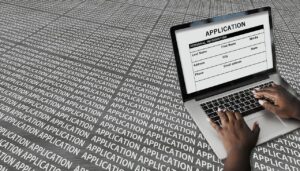Using stories from your life to confirm your skills during a job interview is a good tool to not only talk about your skills and experience but also show them in action. This approach helps create a more vivid and convincing impression of yourself as a suitable candidate, compared to simply repeating points from your resume.
In this article, we will discuss how to illustrate your professional skills and qualities to an employer using such stories, and provide several examples.
Requirements for Job Seeker Stories
1. The story must be true.
It’s best if your story is verifiable, or if you yourself, ahead of the questions, present the employer with something to back up what you’ve said.
2. The story should be as close as possible to the context of your future work.
If there are no such experiences, a description of any professional situation from the past can be used. However, if there was nothing like that (for example, you are a candidate without experience), you can tell about a case from your studies or even personal life.
3. The story should be convincing and understandable.
The story should be clear, concise, and logical. To avoid overwhelming the HR manager with technical details from another field, some points can be simplified or additional explanations provided.
Preparing for Using Stories in Job Interviews
Before formulating stories for an interview, it is important to prepare well. This includes:
1. Analyzing the job requirements.
Determine what qualities and skills the employer is looking for and select stories from your work experience that could demonstrate them. You can read reviews about the company or find former employees or applicants who have been there for an interview to learn what interviewers are most interested in. In general, gather information about the company.
2. Choosing suitable stories.
Select stories that are most relevant to the vacant position and reflect your best professional qualities.
3. Rehearsal.
Practice your stories enough times so that they sound natural and convincing.
What Should a Job Seeker Story Consist Of?
A well-structured story should include the following elements:
1. Introduction.
Start with a context that will help the interviewer understand the situation you are describing.
2. Problem.
Describe the problem you faced.
3. Action.
Tell what you did to solve the problem.
4. Result.
Finish the story by describing the result and what you learned during the process.
Be prepared for the interviewer to ask questions about what you said.
After the interview, analyze your story and the employer’s questions again. It is possible that something in your story is unclear to an outsider and requires correction or additional information.
Examples of Brief Stories for Interviews
Example 1: Illustrating Leadership Qualities of a Candidate.
Introduction. “When I worked as a project manager at my previous company, we faced a very tight deadline that seemed impossible to meet.”
Problem. “The team was demotivated, and many tasks were delayed. It was clear that we needed a new approach to complete the project on time.”
Action. “I gathered the team, and we developed a new plan that included more efficient task distribution and daily meetings to track progress. I also motivated the team by praising their efforts.”
Result. “In the end, we not only completed the project on time but also exceeded the client’s expectations. This experience taught me the value of effective leadership and the importance of motivating the team.”
Example 2: Illustrating Adaptability of a Job Seeker.
Introduction. “During my internship in the marketing department, the company opened a new direction and decided to promote it through digital channels.”
Problem. “I was trained in traditional marketing methods and did not have sufficient experience in digital marketing.”
Action. “I quickly adapted, starting to learn new tools and advertising platforms. I read numerous articles, watched educational videos, and even attended offline courses in the evenings.”
Result. “Within six months, I gained experience in digital marketing and conducted three successful advertising campaigns. This situation also showed me how important it is to be ready for changes and adapt quickly.”
Example 3: Illustrating the Ability of a Candidate to Work in a Team.
Introduction. “As an IT consultant, I worked in an international team on a large project to implement a new system.”
Problem. “The team was geographically distributed, creating communication and coordination problems.”
Action. “I suggested using several tools to improve communication and task tracking. I organized regular video conferences to maintain team spirit.”
Result. “Our project was successfully completed due to improved communication and coordination. I learned how to properly organize effective teamwork in distributed teams.”
Let us clarify that these examples are hypothetical. Each job seeker will have their own situations, their own experience of solving professional tasks. Take the time to recall them in detail and formulate them correctly.
In this way, preparing and structuring stories helps to create a more vivid and convincing impression of yourself. The examples in this article demonstrate how stories can be used to showcase leadership, adaptability, and teamwork. Incorporating these stories into your personal narrative or your answers to employer questions can significantly increase your chances of being successful in an interview and getting the job.










